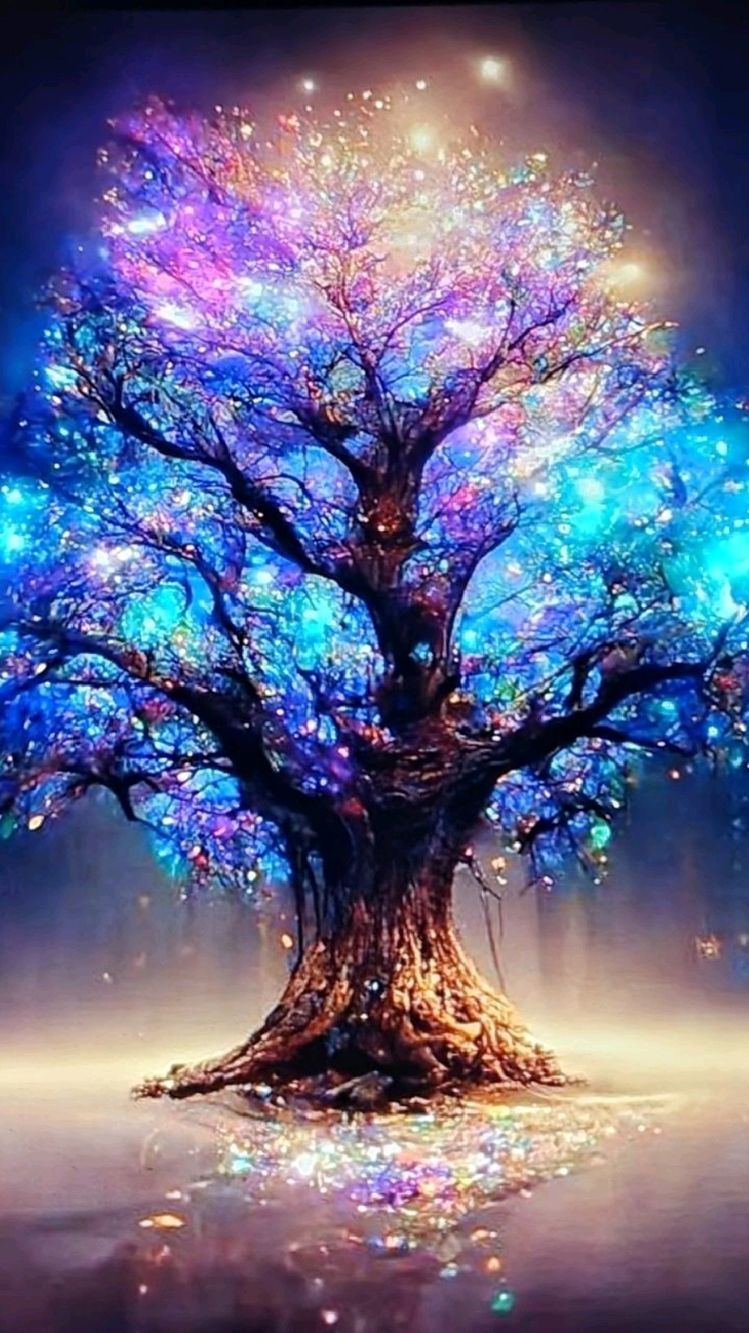Annsch Hannsch (anʃ hanʃ)
Gem Tree; Basic Draconic
The tree gleamed like a diamond. With its multiple fruits reflecting different colors. The tree's light seemed to light up the cave with eerie beautiful color.
Basic Information
Anatomy
The gem tree has a hard crystal-like bark. The hard crystal bark protects the inside of the tree. The bark protects by preventing moisture from hurting the inside of the tree. The bark also keeps the tree dry and it insulates against the elements and insects.
There is also an inner bark that is called "phloem." It acts like a tube that the food passes through to the rest of the tree. It doesn't live that long and when it dies it is because of part of the outer bark. The inner bark of a gem tree looks like a liquid crystal running in an odd tube pattern.
Going further into the anatomy of a tree we have the cambium cell layer. This part of the tree grows separately from the trunk. This layer makes new bark and wood every year. This layer has hormones that pass to the phloem with food from the leaves. The hormones are called "auxins" and it stimulates growth. These become the leaf buds at the end of the branches.
The fourth part of the tree's anatomy and morphology is sapwood. The sapwood pipes water up to the leaves. It is also the newest wood in a tree. These cells are soft and loose. It later turns into heartwood which we will get to later. The sapwood is like the veins of the tree. It is where the sap and water move to where the tree needs it to move.
The fifth part of the tree is the heartwood. It is the support pillar of the tree and is dead. The heartwood does not decay or lose its strength. As long as the other layers of the tree are still intact. It is made from hollow fibers that are glued together. These needlelike cellulose fibers when bonded together can be stronger than steel. This helps it to support the weight of the tree and keep it upright.
The sixth and final part of the tree is the leaves, fruits, and nuts. The gem tree has crystal-like leaves that shimmer in the light. The leaves make food for the tree. These leaves are broad leaves which help with food building and evaporation. The gem also has fruits but we can talk about that later.
Genetics and Reproduction
The gem tree flowers and is fertilized by natural pollinators. The flowers have four petals and look like irises. These flowers then turn into crystal-clear fruit. The fruit has a tough skin and a soft inside. The seed is hard and looks like an uncut gemstone. The gemstone seed can be planted to make another tree or it can be cut to be used as jewelry.
Ecology and Habitats
The tree can be grown in dark caves and deep forests. It is uncommon in deep forests but can be found easily in caves. This is why the tree is believed to be extinct. Since no one can find it in the forest areas that they use to live in.
Additional Information
Domestication
There used to be tree farms for the gem trees. The farms were not run well since the seeds were being harvested for jewelry. Because of this, the farms couldn't keep up with demand, since they were not replanting the trees. Since they also would cut down the trees to use the crystal bark for jewelry.
Uses, Products & Exploitation
The fruit can be used for food. The leaves can be used in healing potions. The seeds can be used to either plant another tree or to make jewelry. Once a seed is cut into a gem for jewelry it can no longer be used as a seed. The sap can also be used in healing and mana potions. It can also be applied to a wound without a potion mix to help heal lesser injuries. The wood and bark of the tree can also be used in jewelry.
Scientific Name
Gem Tree
Conservation Status
This tree is believed to no longer exist due to over-harvesting and not being replanted. Since the tree does still exist there are laws in place to protect it. These laws are supposed to stop people from cutting down and farming this tree. The tree can only be found in the wild now in protected locations.




